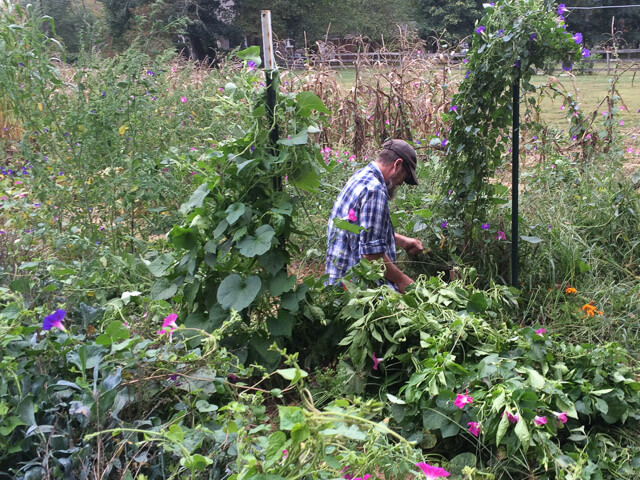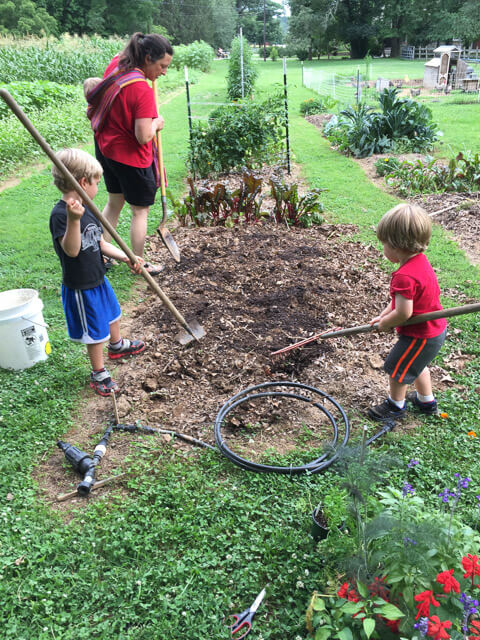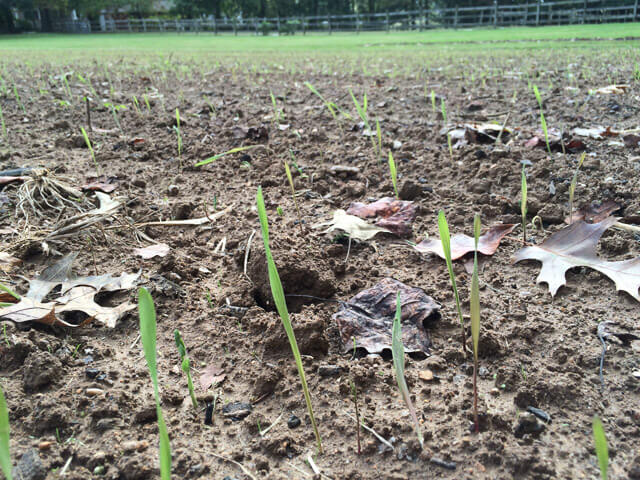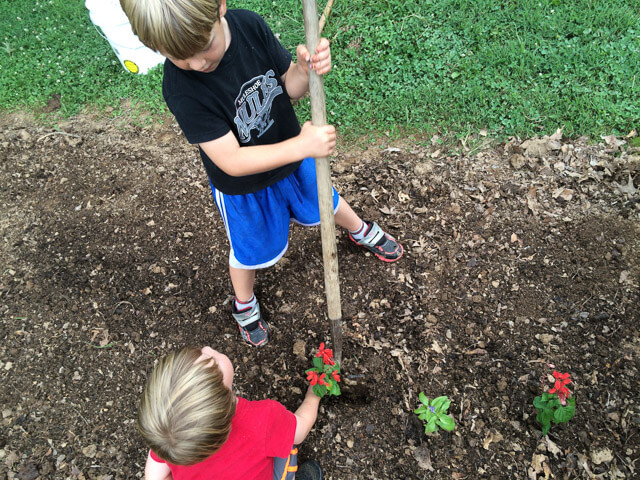Four Ways a Fall Garden Can Give You a Fresh Start
It was summer, and we felt like failures.
The tomatoes were blighted, the beans were riddled by beetles, the cabbage split, and the pumpkins were hidden in a jungle of weeds. Our garden was NOT a place of beauty or serenity.

The weeds were out of control!
One of us had a newborn baby and the other had a hernia. And as you might guess, neither one of us was moving very fast. Summer flew by, our plants struggled, and we grew more and more discouraged.
But in August, we dusted ourselves off to start again.
We went to the farmer’s market, so we could eat fresh veggies and enjoy others’ successes.
We gave ourselves permission to slow down and focus on our health, our kids, and our sleep.
And we planted.
Beginning Again with a Fall Garden
The beauty of a fall garden is in the chance to start fresh even as the days are getting shorter and cooler. Many fall crops even taste better in cool weather!
It can be as simple as a cover crop, garlic, and mulch. Healthier soil, cheerful early green when the garlic sprouted, and lots of garlic to harvest in summer.
I always look forward to a fresh start by planting a fall garden. Over time, we’ve tried planting seeds in July and August, planted a variety of cover crops (for a living mulch), and added low tunnels and cold frames. A little a time to stretch the garden goodness.
Here are four ways you can get a fresh start with a fall garden:
1. Plant greens and root crops.
Think cool-weather crops! Lettuce, carrots, beets, cilantro, arugula, collards, and kale top our list.Depending on your location, you may have time to plant, grow, and harvest before frost. Add some protection with a row cover or cold frame and you can extend the harvest even longer. Many cold-weather varieties can even survive the winter under a layer of mulch. Pull back the mulch in spring, and you’ll have greens again in no time! Ready to start planting? Find your state in this fall planting guide round-up from High Mowing.

Everyone pitched in to prepare an empty part of the bed and plant our fall crops.
2. Plant a cover crop.
Chop down any waning plants or weedy areas, turn the soil, and plant a cover crop. You’ll suppress weeds, add organic matter (and nitrogen if you pick a legume), decrease erosion, and more. Compare cover crop options with this handy chart from Johnny’s Seeds.

After a frustrating summer season, I was so happy to see our cover crop of rye and vetch sprouting last fall.
3. Plant flowering and fruiting shrubs and trees.
In regions with mild winters (usually Zone 7 and south), you can plant container-grown shrubs and trees in early fall. The new plants won’t put on many new leaves up top, but underground, the roots are growing! They’ll go dormant over the winter and then pick up growth again in spring. Come next summer’s heat, they’ll be well-established and providing flowers and fruit (depending the type and age of the plant) for you and your beneficial insects.
4. Sheet mulch.
Create amazing soil for next season by composting this year’s garden waste and the coming fall leaves. A sheet mulch goes down right in an area you want to improve. It often starts with a weed-blocking layer of newspaper or cardboard and thick layers of organic matter, like garden waste, leaves, straw, and manure. The thick mulch keeps the soil moist and the worms happy! By spring, you’ll have a soil that’s weed-free and ready to grow!
Toby Hemenway, one of our favorite garden and permaculture authors, has a Bomb-Proof Sheet Mulch “recipe” that I’ve tried before with fantastic results. You’ll see soil improve with even a simple version, ala cardboard and eight inches of fallen leaves.
(And if you have more yard waste than you need for the sheet mulch, it’s the perfect chance to start a new compost pile!)
If you’ve had a challenging year in the garden, don’t give up!
Gardening is a continuous cycle of beginnings and ends. As summer comes to an end, celebrate the season change with your own beginning by planting something for fall.

What will you plant this fall?
Tell us about your plans in the comments below!

What a great reminder of the chance to start fresh in the garden! We just moved to a huge place in December and the weeds are out of control this year. Look forward to the next year and a new start as fall and winter approach.